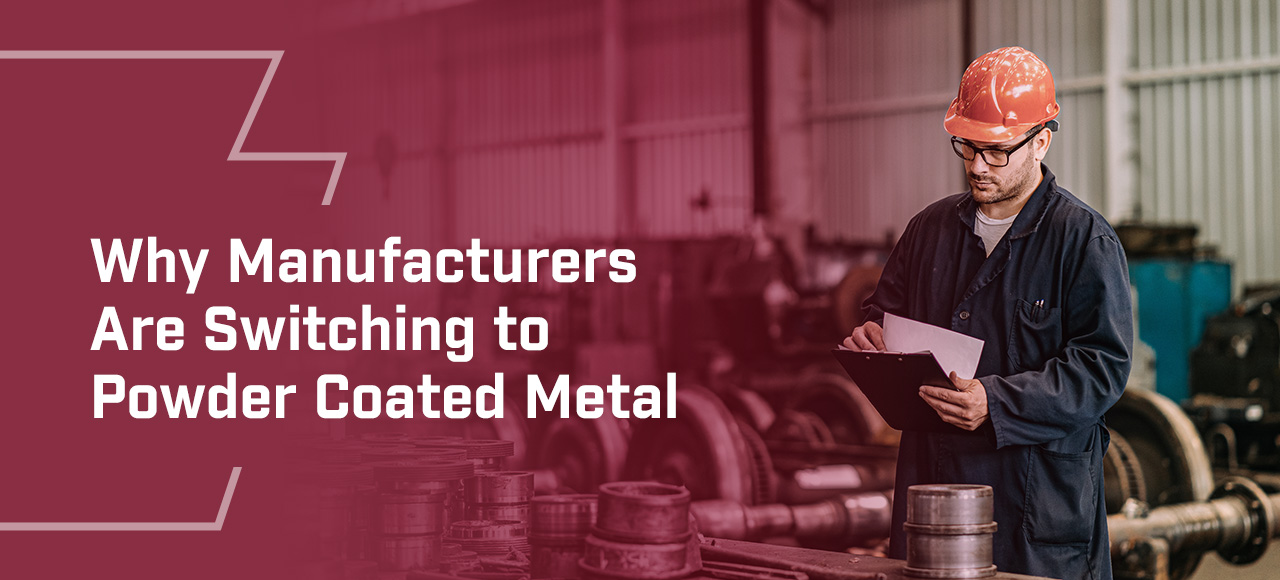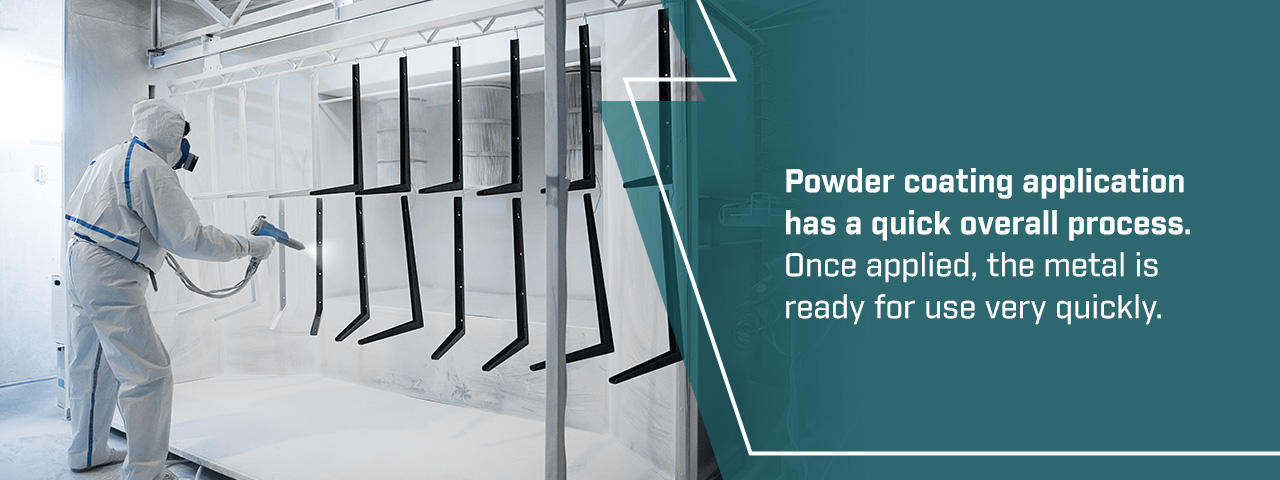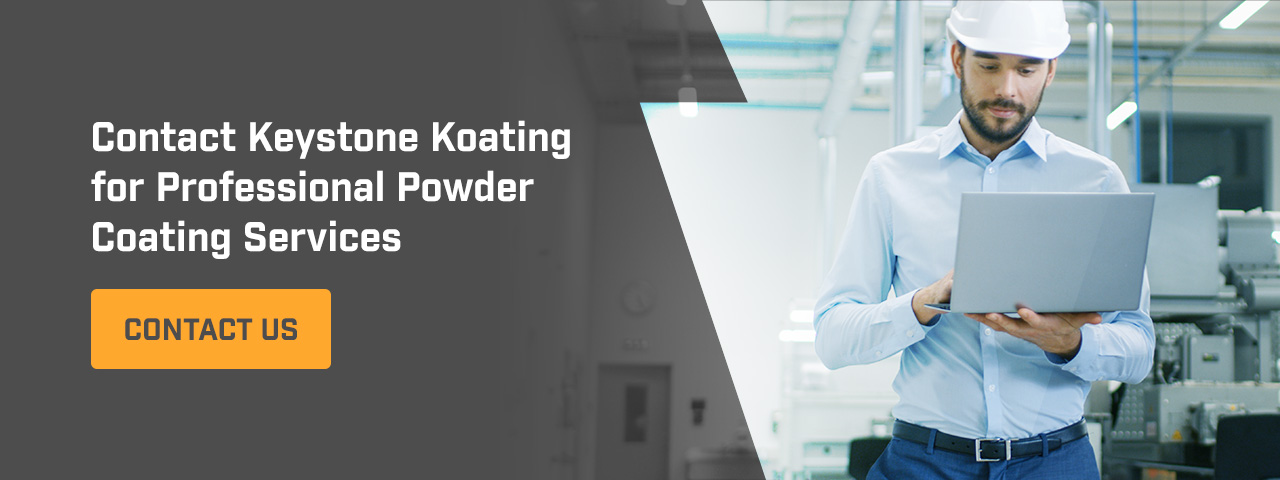
Metal fabrication is an essential process for society. The process allows you to morph sheet metal into specific shapes. Metal fabricators use welding, cutting, stamping and other methods to turn metal into structures society uses daily. From hand railings to heavy machinery, metal fabrication creates essential components of everyday life.
Many metal fabricators use a process called powder coating as a finish for their projects. Powder coating is a dry powder that you can apply to charged surfaces of metal fabrication projects. Once applied, it adds a layer of protectiveness to the material, along with other benefits. This method is becoming more popular due to its many advantages.
Here is an overview of why manufacturers use powder coating for metal fabrication and how it could benefit you.
The Benefits of Powder Coating for Metal Fabrication
Powder coating enhances metal fabrication projects by adding an extra layer of durability. Metal fabricators apply the coating to the metal’s surface after shaping it. Because of the charged surface, the powder holds to the surface and remains in place after curing. Manufacturers commonly use powder coating for materials like steel, aluminum and plastic.
After its application, powder coats can provide many benefits for metal fabricated structures. Because of its many advantages, the process is growing in popularity.
These are some of the advantages of the powder coating process.
Enhanced Durability
After adding powder coating to a structure or object, its protectiveness can last up to 40 years. Powder coating helps metal withstand weather elements and years of consistent use. Typically, your metal material won’t require any further maintenance after application. The electrostatic charge sticks to all exposed areas of the metal, providing full coverage.
Metal fabricated objects face scratches and regular wear during daily use. But a powder coating offers a thorough layer of protection for the metal, helping it resist scratches and other imperfections. In turn, your metal keeps a new and shiny appearance even after years of use.
Improved Aesthetic
Another benefit of powder coating is its ability to give the metal a sleek attractiveness. Unlike paint coatings, it adds a smooth finish to your metal project after only one application. It can also help reduce fading over time. The uniform and attractive finish increase the quality of your product. It conceals existing depressions or scratches and improves the overall look of your material.
There are also many color options to choose from for your coating. If your fabricated metal item fits into a specific setting, you can select the color that suits this theme best. For example, if you needed a hand railing to match a certain aesthetic, your powder coating could help make it a specific color.
Corrosion Protection
All metals are subject to corrosion, a harmful electrochemical process that gradually destroys materials. Atoms on the metal’s surface oxidize as they lose electrons to oxygen or water. As a result, the metal surface degrades. For example, rust formation is an instance of corrosion. This process causes countless metal projects to deteriorate and need replacements.
However, powder coatings can help metals resist corrosion. Because the entire surface is covered, it prevents air from making constant contact with the metal. And the longer a material deters corrosion, the further it extends its life span.
Eco-Friendliness
The most common alternative to powder coating is paint finishes. These are effective applications, but they also have drawbacks. Paint-based finishes typically consist of volatile organic compounds (VOCs). Due to their toxicity, these compounds can have adverse effects on people’s health and the environment. They linger in the air and harm the environment while reducing air quality.
In contrast, the dry powders used in powder coatings do not have VOCs. This makes powder coatings a much healthier option for the environment and people’s health. After you use powder coatings, you won’t expose anyone to toxic materials. You also won’t emit any air pollution, making powder coatings a more environmentally friendly choice.

Cost-Efficiency
Another benefit of powder coatings is their cost-efficiency. Powder coating application has a quick overall process. Once applied, the metal is ready for use very quickly. And, it typically requires no further maintenance after the application and curing. The speedy process allows for increased efficiency and reduced labor costs. The faster your process is, the more money you save.
In addition, powder coatings help to extend a metal’s life span, meaning you won’t have to replace the metal for years. Without these extra replacement costs, you save additional money.
Overall, the strong benefits of powder coating are causing many metal fabricators to use this process for their projects.
When to Incorporate Powder Coating Into Your Fabrication Process
Once metal fabricators have shaped metals, it’s important to add finishes to the materials. Without these additional protective layers, the metals could quickly erode due to factors like:
- Salt exposure
- Ultraviolet light
- Excess contact with moisture
Luckily, finishes such as powder coatings can help prevent or stop these degradation processes. You should incorporate the powder coating process during post-fabrication. In other words, you apply powder coating to a metal once it’s already shaped.
Here are a few of the basic steps of powder coating:
- Blasting: Many powder coating appliers use a method called blasting to remove inorganic particles from your metal. For instance, blasting removes particles of oil and rust. Blasting ensures powder coating can be properly applied to your metal’s surface.
- Pretreatment: Next, manufacturers use a pretreatment process to thoroughly clean and prepare the metal for powder coating.
- Masking: During this step, professionals block off areas of the metal that do not require powder coating.
- Coating: Using electrostatic bonds, the coating sticks to the metal surface. You can use a machine or professional finisher to perform this process.
- Curing: Finally, professionals move the metal into an oven at a high temperature. Curing melts the resin and other materials into the powder, making it a long-lasting and sturdy product. After cooling, the metal is ready for packaging and use.
In most cases, you engage with powder coaters during the post-fabrication phase of your metal fabrication process.
Contact Keystone Koating for Professional Powder Coating Services
Powder coating provides many benefits for metal fabrication. For over 30 years, Keystone Koating has offered comprehensive powder coating services, complete with an eight-stage pretreatment process. Our thorough and high-quality applications ensure long-lasting and durable metals. And, with quick turnaround times and large volume capacities, Keystone Koating provides top-notch service.
To get started, request a quote from Keystone Koating today.


